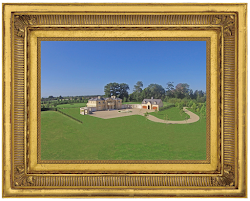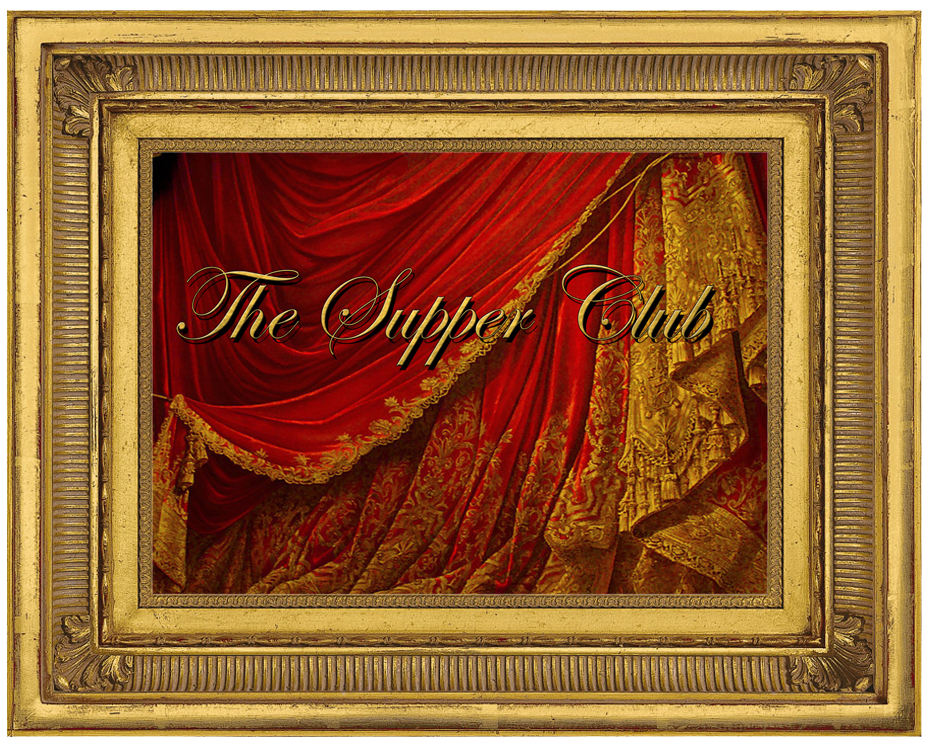 Opera Unleashed is an opera company recently formed by a school friend of mine, Evelyne Bourton. Evelyne graduated from the University of Waikato with a BMus(1st class Hons) and a post-graduate diploma in linguistics as a Sir Edmund Hillary Scholar.
Opera Unleashed is an opera company recently formed by a school friend of mine, Evelyne Bourton. Evelyne graduated from the University of Waikato with a BMus(1st class Hons) and a post-graduate diploma in linguistics as a Sir Edmund Hillary Scholar.

A regular on the concert platform, she has sung in concert with Dame Malvina Major and renowned New Zealand Bass Grant Dickson who she is currently studying under.
She has sung as a soloist with Hamilton Cantando Choir, University of Waikato Choir and was the winner of the 2008 Hamilton Civic Choir solo artist scholarship. As a member of the Chapman Tripp New Zealand Opera Chorus she has sung in operas including Lucia di Lammermoor, Turandot and the Mahler 3rd Symphony.
She sang the role of The Dragonfly and the French Lady's Chair in The Opera Factory's production of 'The Bewitiched Child' by Maurice Ravel and has been a soloist in three of David Griffths operas. She has been a multiple prize winner at the N.Z Aria competition and has sung with the APO.
 This year her opera company is performing La Finta Giardiniera.
This year her opera company is performing La Finta Giardiniera.
Synopsis:
The most important event of La finta giardiniera takes place a year before the action begins on stage. Count Belfiore, in a fit of passion, stabs his lover, the Marchioness Violante Onesti. He then flees, believing he has killed her. But Violante is not dead. The wound is grievous, but it heals. Her heart, on the other hand, does not. She is still very much in love with the Count. She disguises herself as a simple gardener's girl and, accompanied by her loyal servant, sets out in search of Belfiore.
Act I
A garden with a wide staircase leading to the Mayor's mansion.
The Mayor, Cavalier Ramiro and Serpetta descend the staircase as Sandrina and Nardo work in the garden. Together they praise the lovely day. But their happiness is feigned: Sandrina is wretched because Don Anchise is in love with her; Nardo is frustrated by Serpetta, who teases him but refuses to respond to his affections; Ramiro is bitter about being tossed aside by Arminda; and, because she has set her own cap at the Mayor, Serpetta is angry at Sandrina.
The Mayor is the only happy person in the group. Today is his niece's wedding day, and her suitor is due to arrive at any moment. He also is giddy over his plan to propose to Sandrina, which he does at the first opportunity. Sandrina demurs and, when Serpetta rudely interrupts, makes her escape.
Arminda's betrothed, none other than Count Belfiore, arrives and is swept off his feet by her great beauty. But Arminda is quick to let him know that she is someone to be reckoned with: Woe to you if I catch you being unfaithful, she warns. I will box your ears. The Count then boasts of his deeds and ancestry to the Mayor. His family tree, he says proudly, can be traced to Scipio, Cato and Marcus Aurelius. Don Anchise responds with a mixture of awe and skepticism, as though he doesn't care what sort of buffoon this fellow is - as long as he marries his niece.
In the garden, Arminda finds Sandrina and casually mentions that she is to marry Count Belfiore. Stunned by the news, Sandrina faints. When the Count arrives, Arminda leaves him to watch over Sandrina while she rushes off to fetch her smelling salts. He is shocked to find that this simply dressed gardener's girl is none other than Violante.
As is so appropriate for an opera buffa finale, everything gets turned on its head. Arminda returns and immediately runs into the last person she expects to encounter, her former lover Ramiro, who is approaching from the opposite direction. Sandrina awakens and finds herself looking directly into the eyes of Belfiore. What are they to do?
The Mayor enters and demands an explanation. But no one knows quite what to say. Sandrina wavers, unable to make up her mind about revealing her true identity, and nearly driving Belfiore out of his mind in the process. Arminda suspects that she's being deceived, but she isn't quite sure. The Mayor blames everything on Serpetta; Serpetta in turn blames Sandrina; and Ramiro, on the periphery, is certain only of the fact that Arminda still does not love him.
Act II
A hall in the Mayor's palace.
Ramiro discovers Arminda and insists that she hear him out. He upbraids her for her inconstancy. When she refuses to listen, he departs, but not before promising revenge upon his rival. Belfiore enters in some distress, muttering: I have no peace since I found Sandrina. Arminda, overhearing this, confronts him angrily before exiting in the grand manner of a spurned seria heroine.
Sandrina is in the worst kind of dilemma. She has finally found her true love, but she is about to lose him forever to another woman. For reasons of her own, she has refused to reveal her identity. Yet when she encounters Belfiore, the question comes gushing out: Why did you stab me and desert me? The Count, overjoyed, responds: Then you are Violante! But Sandrina quickly reassumes her disguise. No, she says, that is what the poor girl said as she died. No matter, Belfiore says, you have the face of my Violante. He begins to serenade her but, partway through, the Mayor enters. Belfiore takes the Mayor's hand, believing it belongs to Sandrina -- then retreats in embarrassment when he discovers his mistake.
Alone with Sandrina, the Mayor again attempts to woo her. But once again he is interrupted, this time by Ramiro, who arrives with the news from Milan that Count Belfiore is wanted for murder. Don Anchise immediately summons Belfiore for questioning. The Count, thoroughly baffled, implicates himself. In order to save him, Sandrina reveals herself as Violante, and the proceedings break up in some confusion. The Count approaches Sandrina, but she pushes him away. I am not your Violante, she says, I only pretended to be in order to save you.
Moments later, Serpetta arrives to tell the Mayor, Nardo and Ramiro that Sandrina has run away. In reality, Arminda and Serpetta have conspired to abduct her, and she has been carried off and abandoned in the wilderness. The Mayor immediately organizes a search party.
A deserted, mountainous spot.
Sandrina is nearly frightened out of her wits. But, in small groups, her rescuers soon begin to arrive: the Count and Nardo, Arminda, Serpetta and the Mayor. Mistaken identities multiply in the darkness: The Mayor mistakes Arminda for Serpetta, and she him for the Count; the Count believes Serpetta is Sandrina, while she believes him to be the Mayor. Nardo alone manages to find his mistress by following her voice. Ramiro, the gallant cavalier, arrives with footmen carrying torches.
All this confusion is too much for poor Belfiore and Sandrina. While the others bicker, they begin to lose their minds. I am the terrible Medusa! cries Sandrina. I am the fearless Alcides! responds the Count. Everyone looks on in astonishment as they begin to dance.
Act III
The courtyard.
The Count and Sandrina are certifiably insane, as Nardo discovers. Still believing that they are gods from classical Greece, they pursue him until he distracts them by pointing at the sky. Look at difference between the sun and the moon! he cries. Observe all the lovesick stars! They are entranced and Nardo is able to make his escape.
Events are taking their toll on the Mayor's judgment, too. Arminda begs for permission to marry the Count, and Ramiro demands that he order her to marry him. But he becomes confused and gives in to them both: Do what you want, he says, just do not trouble me any more.
A garden.
The Count and Sandrina gradually awaken after sleeping, at a discreet distance from one another, in the garden. Their madness has passed. Belfiore makes one final appeal, and Sandrina admits that she is, indeed Violante. However, she says, she loves him no more. Sadly, the Count agrees that they should go their separate ways.
But (this is an opera buffa, after all) their feet begin to drag, and they turn back. The mutual attraction of their love is too strong: They fall into each other's arms and then immediately run off to get married.
The Mayor and Arminda are dumbfounded when they hear the news. After they recover from their initial shock, they, along with everyone else, take it all in stride. Arminda decides to marry Ramiro, and Serpetta even decides that Nardo isn't such a bad choice, after all. Only the Mayor is left out, and he accepts his fate philosophically. Perhaps, he says, he will someday meet another gardener's girl.


Peter and I, patrons of the arts that we are, hope to have regular Glyndebourne styled afternoons at Willowbrook Park with Evelyne's help.


Until then, you can enjoy the work of her company at the Hamilton Gardens Festival...




























































%2B-%2BPortrait%2BOf%2BFran%C3%A7oise%2BD'Escravayat%2C%2BMarquise%2BDe%2BLa%2BBarri%C3%A8re%2C%2BAs%2BFlora%2C.jpg)
















































